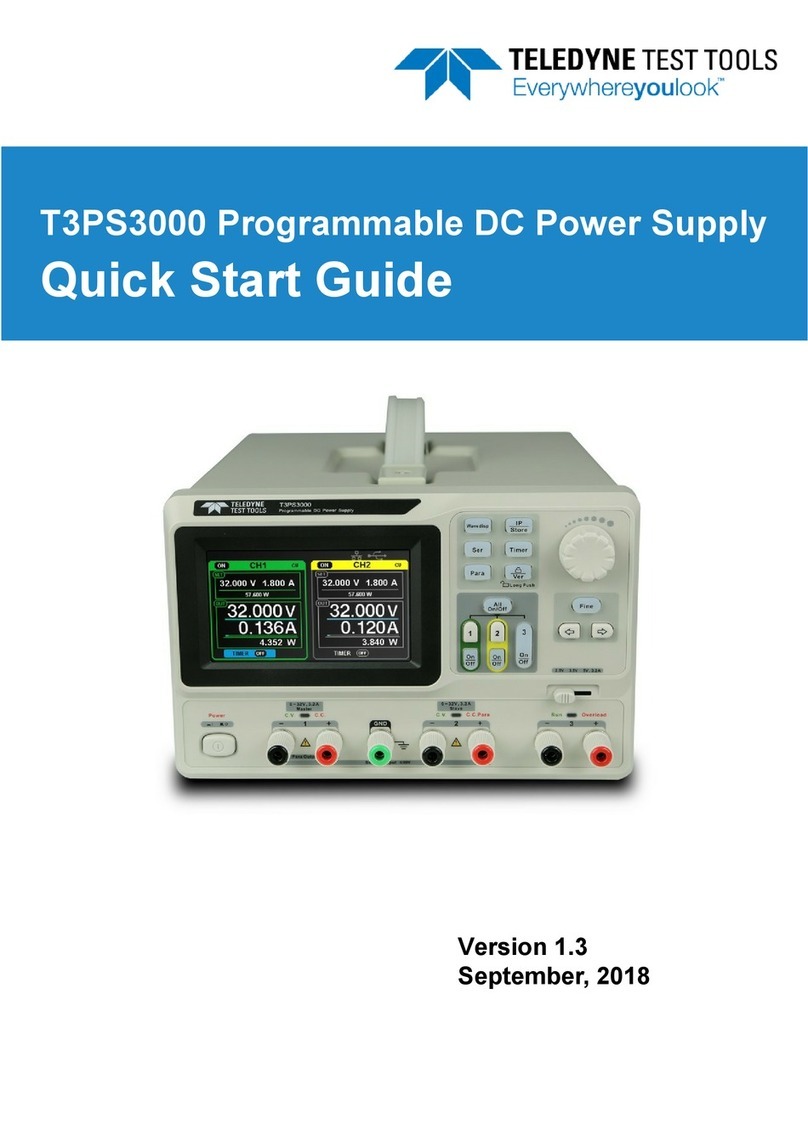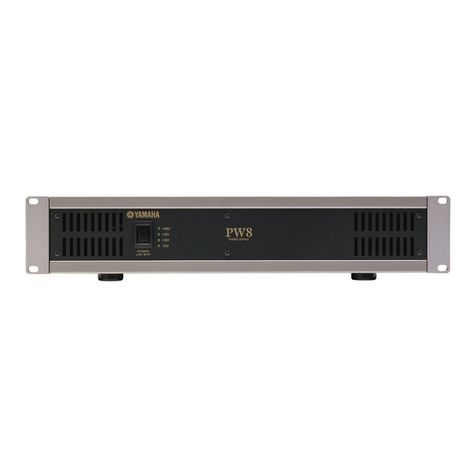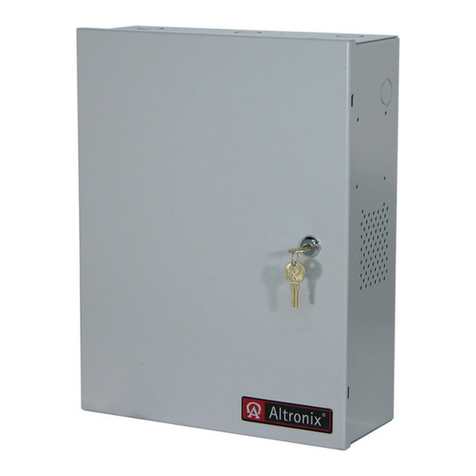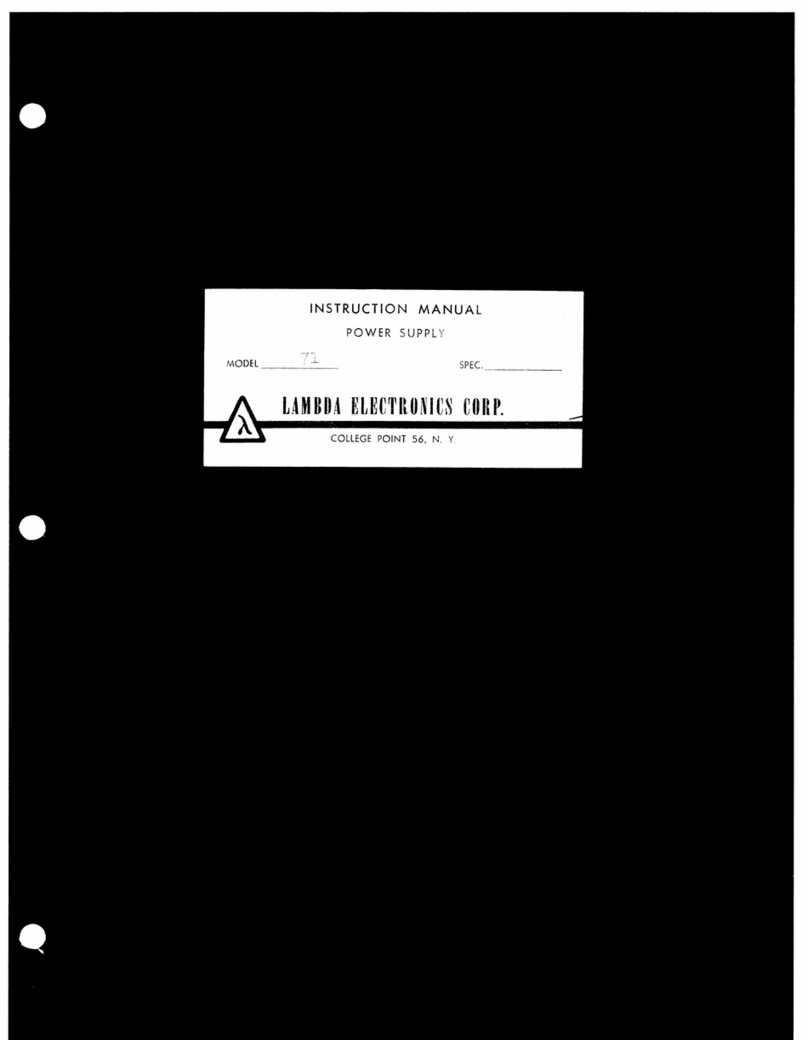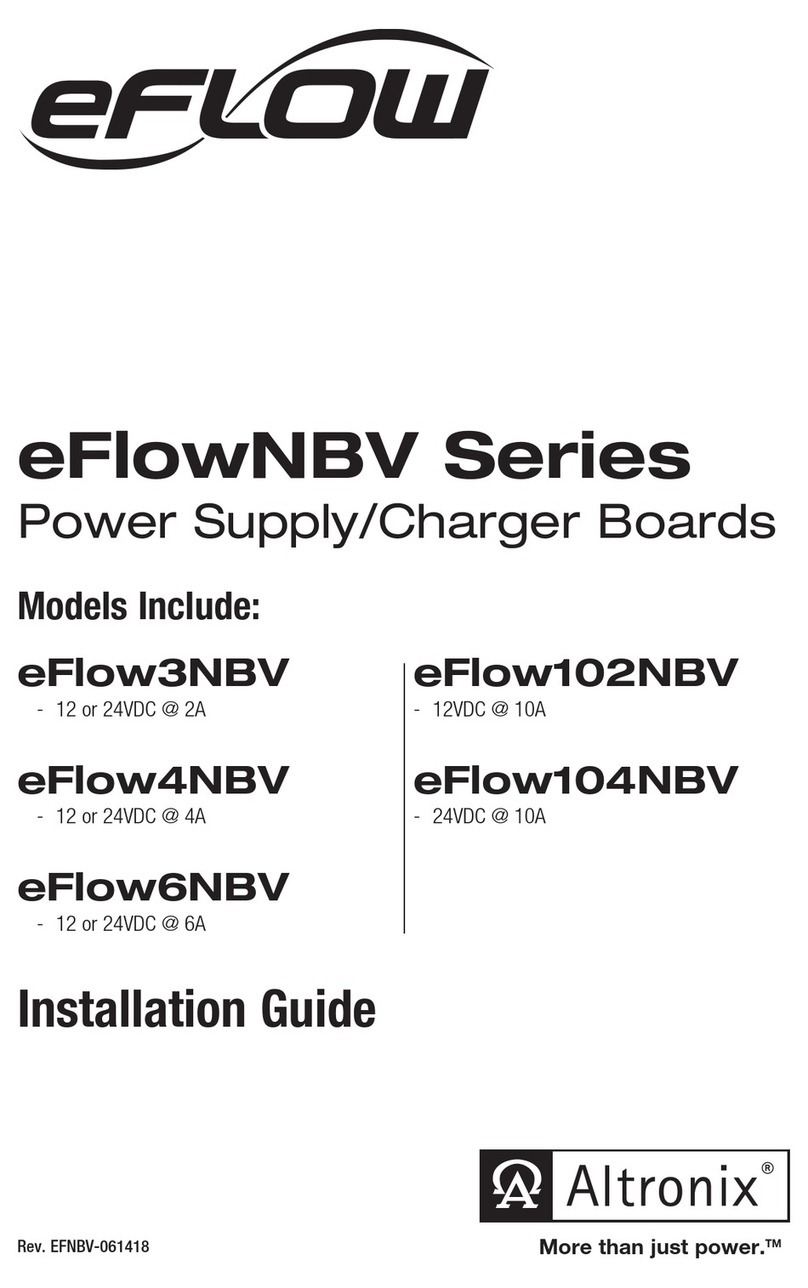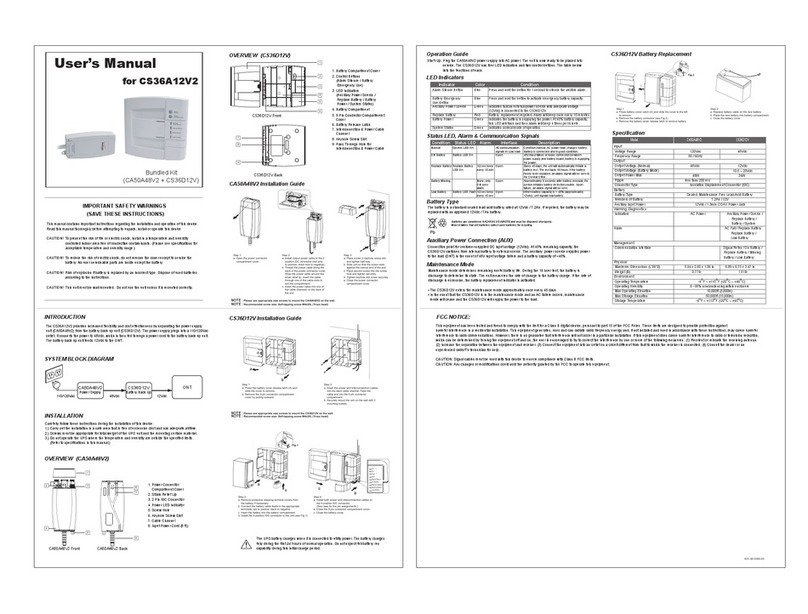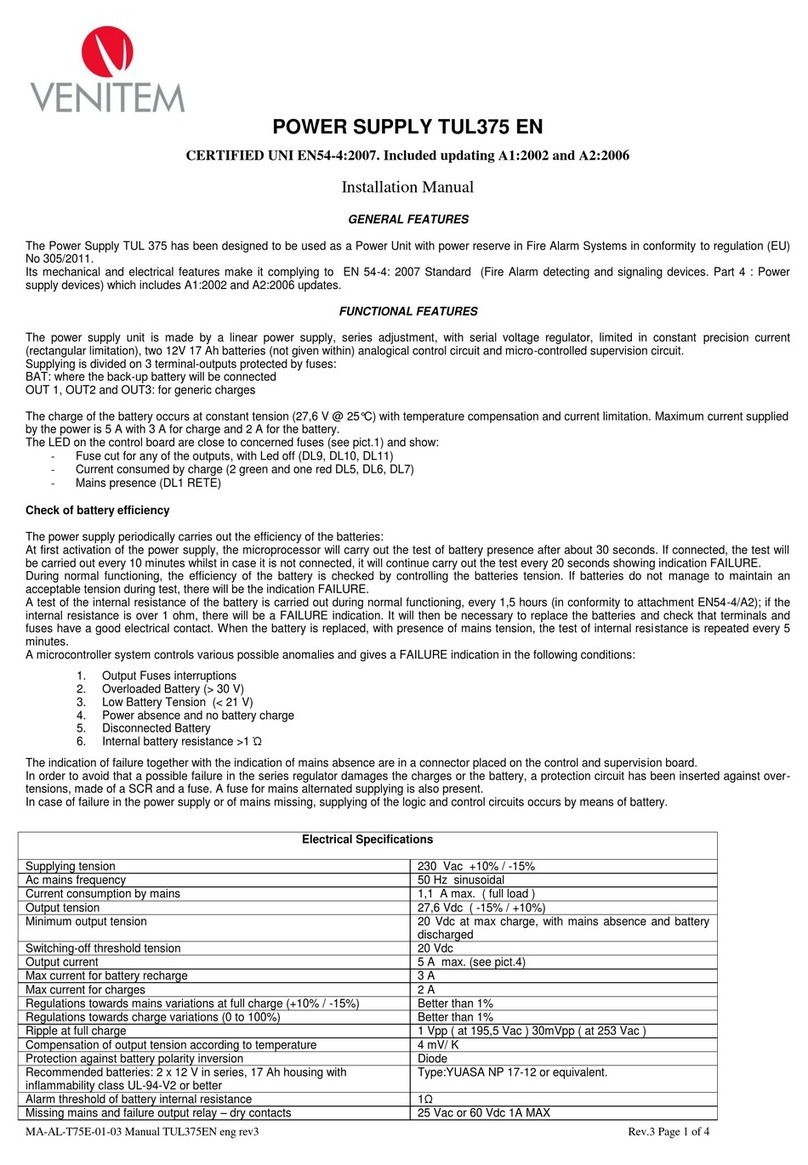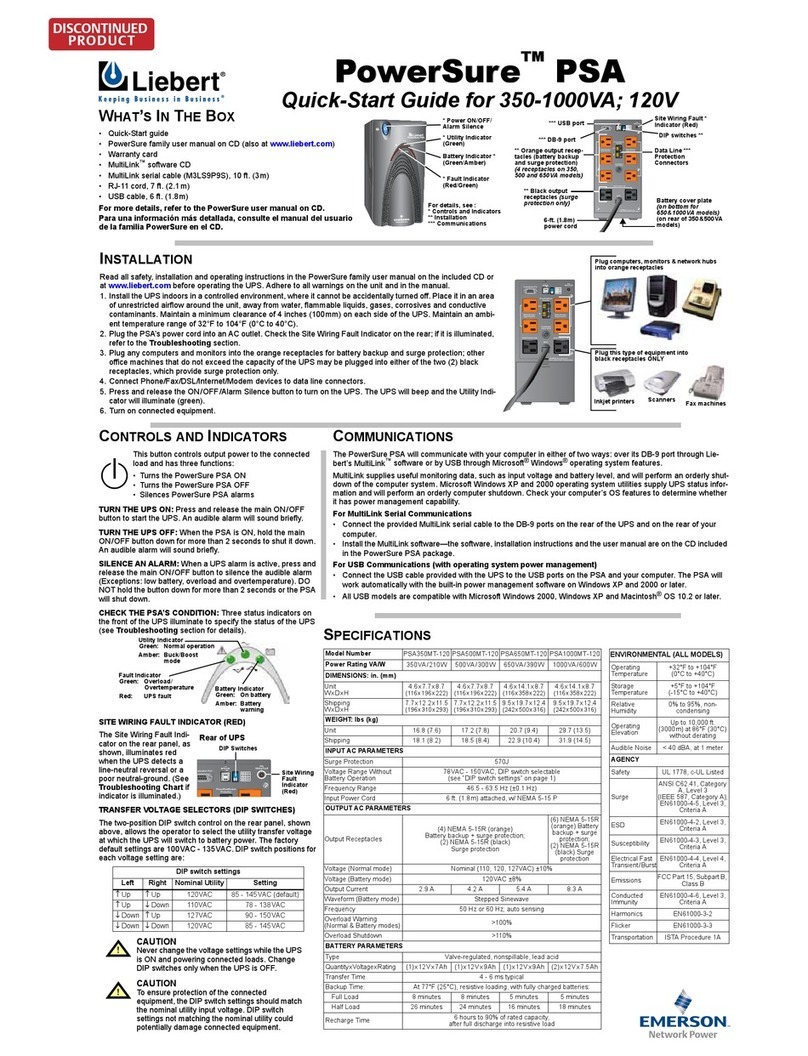INIM Electronics SmartLevel SPS24060G Assembly instructions

Installation and programming manual
1
SmartLevel
SPS24060G
SPS24160G
Power supply station
Installation and programming manual
ISO 9001 Quality Management
certified by BSI with certificate number FM530352
EN 54-4 0051
0051-CPR-0170
0051-CPR-0171

2Copyright
Power supply stations
Copyright
The information contained in this document is the sole property of INIM Electronics s.r.l. No part may be
copied without written authorization from INIM Electronics s.r.l.
All rights reserved.
European directive compliance
This power station has been designed and developed to the highest standards of quality and performance
implemented by INIM Electronics.
This power station must be installed in accordance with the instructions described in this manual and in
compliance with the laws in force.
All power stations from the SmartLevel series are EN54-4 compliant.
All power stations from the SmartLevel series, and all accessory items and special functions have IMQ
Sistemi di Sicurezza certification, unless otherwise stated.
Declarations of performance, declarations of compliance and certificates relating to the products mentioned
in this manual can be downloaded from the following website:
www.inim.biz/certifications

Installation and programming manual
Table of contents 3
Table of contents
Copyright ............................................................................ 2
European directive compliance ............................................... 2
Table of contents.................................................................. 3
Chapter 1 Overview............................................................................. 5
1.1 Application and use 5
1.2 The system parts and definitions 6
1.3 The SmartLevel power supply stations 6
Chapter 2 General information .............................................................. 7
2.1 Supplied documentation 7
2.2 Manual details 7
2.3 Operator qualifications - access levels 7
2.4 Intellectual property rights 7
2.5 Disclaimer 7
2.6 Recommendations 8
2.7 System test 8
2.8 Note to the installer 8
2.9 Technical support 8
2.10 Conventions 8
2.11 Manufacturer's name and address 9
2.12 CE Mark 9
2.13 Warranty 9
2.14 Safety laws 10
Chapter 3 Device management ........................................................... 11
3.1 Product handling and storage 11
3.2 Environmental conditions 11
3.3 Unpacking the device 11
Chapter 4 Functions and features ........................................................ 12
4.1 Controlling the Outputs 12
4.2 Controlling the outputs via the Inputs 13
4.3 How to use the power supply station 13
4.4 Protection circuit 14
Chapter 5 Technical description........................................................... 15
5.1 Station 15
5.2 Internal devices 16
5.3 Technical specifications 17
Chapter 6 User interface .................................................................... 18
Chapter 7 Installation instructions ....................................................... 19
7.1 Wall mounting 19
7.2 RS485 BUS wiring 19
7.3 Connecting the output channels 20
7.4 Connecting the FAULT output 20
7.5 Connecting the mains power source 20
7.6 Connecting the batteries 21
7.7 Thermal probe 23
Chapter 8 Powering up the system ...................................................... 24
Chapter 9 Viewing the display screens ................................................. 25
9.1 Presentation screen 25
9.2 Output status screen 25
9.3 Main menu 26
9.4 Faults screen 26

4Table of contents
Power supply stations
Chapter 10 Programming and maintenance from the panel....................... 27
10.1 Programming operations 27
10.2 Direct Maintenance 28
10.3 Closing a Programming/Maintenance session 28
Chapter 11 Troubleshooting ................................................................. 29
11.1 Current faults list 29
11.2 “Output protection” fault 29
11.3 Battery faults 30
11.4 Other faults 30
Chapter 12 Maintenance ...................................................................... 31
Appendix A Order codes....................................................................... 32

Installation and programming manual
Overview 5
Chapter 1
Overview
Note: The power supply stations described in this manual have been designed and developed to the highest
standards of quality, reliability and performance. The components selected for this product will operate
properly within their specifications when the environmental conditions outside the product enclosure
comply with Class 3k5 (EN 60721-3-3).
1.1 Application and use
The SmartLevel unit is a constituent part of your fire detection system and is capable of supplying power to
the remote loads of the system. It supplies power to remote loads such as: fire-door magnets, sounders,
emergency signs, linear smoke detectors.
Note: The SmartLevel power supply station is EN54-4 compliant and specifically the amendment EN 54-
4:1997/A2:2006 which includes a test regarding the internal resistance of the batteries.
Main features:
• User interface comprising display, buttons and buzzer
• 3 controlled outputs
• fault relay
• direct connection to RS485 BUS
The SmartLevel can operate in stand-alone mode using the fault signaling output and on-board data, or
combined mode using the RS485 BUS of an INIM Electronics fire detection system (refer to Chapter 4 -
Functions and features).
Figure 1 - Example of a typical application
Remote control via the RS485 BUS of
an INIM fire-detection panel
3 output channels

6Overview
Power supply stations
1.2 The system parts and definitions
Switching power supply: this unit, starting from the mains power supply (230V ) it connects to,
supplies the board with a 24V (27,6V ) stabilized current capable of feeding the control panel and
recharging the batteries. The power-supply module is located below the mother board and is EN54-4
compliant. the mains power supply (230V ) the primary power source of the system. Refer to paragraph
5.2 Internal devices.
Batteries: the secondary power source of the system. The power supply station enclosure houses two lead
batteries @ 12V 7Ah (depending on the model) connected in series. The system monitors the battery
status (efficiency and charge). A fault signal will be generated when voltage overload/underload or
inefficient battery conditions occur (amendment A2). In the event of primary power failure (230V ), the
batteries will take over automatically. If the problem persists for a long period thus causing the battery
charge to drop below the minimum value required, they will be shutdown automatically in order to avoid
damage. Refer to paragraph 7.6 Connecting the batteries.
Thermal probe: an accessory tool connected to the panel and attached to the battery pack. This device
monitors the temperature of the battery pack and regulates the battery charge accordingly. Refer to
paragraph 7.7 Thermal probe.
RS485 BUS: 4 wire BUS which allows the power supply station to be connected directly to INIM fire
detection panels (SmartLoop, SmartLight and SmartLine). Four pole twisted cable must be used for all
connections. Refer to paragraph 7.2 RS485 BUS wiring.
1.3 The SmartLevel power supply stations
Product models:
• SPS24060G - power-supply unit with internal 60W @ 27.6V switching power-supply module and
housing for 7Ah, 12V batteries
• SPS24140 - power-supply unit with internal 160W @ 27.6V switching power-supply module and
housing for 17Ah, 12V batteries

Installation and programming manual
General information 7
Chapter 2
General information
2.1 Supplied documentation
The power supply station comes with a combined "Installation and Programming Manual" (this document).
For further copies of the installation manual, please contact INIM electronics offices quoting the order
number shown in Appendix A Order codes.
2.2 Manual details
• Title: SPS24060G and SPS24160G installation and programming manual
• Version: 1.00
• Installation and programming manual code: DCMIINIESPS24G
• Addresses: installer, technicians
2.3 Operator qualifications - access levels
The SmartLevel power supply station has been especially designed to comply with EN-54-4 (including the
provisions of EN 54-4:1997/A2:2006). User Access
Level 1: Building occupants
Using the graphic screens, building occupants can view the status of the outputs and the output
voltage. Furthermore, they can view the Events Log, silence the power-supply buzzer, test the
LEDs and reset the power supply station.
Level 3: Authorized technicians appointed by the Installer company.
These technicians can, by means of the necessary tools, remove the frontplate of the power
supply station. They can insert the respective jumpers in order to access and carry out
programming and maintenance. Processing is inhibited during programming sessions,
therefore, the device will be unable to generate any signals whatsoever.
Level 4: Technicians employed by the Manufacturer (INIM Electronics s.r.l.).
The manufacturer company technicians can, by means of special tools, repair or replace the
control panel components.
Note: This manual is for Authorized technicians (Level 3), however, it also describes some information
regarding the end user (level 1).
2.4 Intellectual property rights
The information contained in this document is private property. All rights reserved.
This document must not be reproduced, either totally or in part, without the prior written consent of INIM
Electronics, and refers to the devices specified in paragraph 2.12 CE Mark.
2.5 Disclaimer
INIM Electronics s.r.l. shall not be responsible for damage arising from improper application or use.
Only qualified personnel (refer to Terminology) should touch this device. Installation must be carried out
strictly in accordance with the instructions described herein, and in compliance with the local fire code in
force.

8General information
Power supply stations
2.6 Recommendations
INIM Electronics recommends that the entire system be checked completely at regular intervals (refer to
paragraph 2.7 System test).
2.7 System test
This system has been designed to provide the highest standards of reliability and performance. Malfunction
of any of the system devices may cause the system to be incapable of reaching the intended levels of
performance. Most problems which prevent the system from operating as intended can be found by regular
testing and maintenance of the system devices (refer to Chapter 12 - Maintenance).
2.8 Note to the installer
In order to provide adequate protection and instructions for correct use of the apparatus, you (the
installer) must be fully aware of the regulations and operating procedures of firefighting. As the only
individual in contact with system users, it is your responsibility to instruct them on how to use this device
properly.
2.9 Technical support
Our professional engineers are readily available to assist you. If you require help, call us and you will be
put through to a person capable of answering your questions and providing you with the service you need.
2.10 Conventions
2.10.1 Terminology
•Power supply unit: refers to the device defined in paragraph 2.12 CE Mark.
•Left, right, behind, above, below: refer to the directions as seen by the operator in front of the
mounted device.
•Qualified personnel: those persons whose training, expertise and knowledge of the laws and bylaws
regarding service conditions and the prevention of accidents, are able to identify and avoid all possible
situations of danger.
•Press: click on a video button, or press a key on the panel keypad.
2.10.2 Graphic conventions
Following are the graphic conventions used in the text. For a description of the graphic conventions relating
to the interface, refer to Chapter 6 - User interface.
Note: The detached notes contain important information about the text.
Attention: The attention prompts indicate that total or partial disregard of the procedure could damage
the connected devices.
Danger: The danger warnings indicate that total or partial disregard of the procedure could injure the
operator or persons in the vicinity.
Conventions Example Description
Text in Italics Refer to paragraph 2.10.2
Graphic conventions
Text in italics: indicates the title of a chapter, section, paragraph,
table or figure in this manual or other published reference.
[uppercase
letter]
[A] Representation of a part of the system or video object.
BUTTON Ok/Esc computer or control panel keys.

Installation and programming manual
General information 9
2.11 Manufacturer's name and address
INIM ELECTRONICS S.R.L.
Via Fosso Antico snc - Fraz. Centobuchi
63076 Monteprandone (AP) - Italy
Tel: +39 0735 70 50 07
Fax: +39 0735 70 49 12
2.12 CE Mark
Figure 2 - Certifications for SmartLevel power stations
Declarations of performance, declarations of compliance and certificates relating to the products mentioned
in this manual can be downloaded from the following website:
www.inim.biz/certifications
2.13 Warranty
INIM Electronics s.r.l. warrants that for a period of 24 months from the date of commissioning, the product
shall be free of defects in materials and workmanship. The warranty applies only to defects in parts and
workmanship relating to normal use. It does not cover:
• Improper use or negligence
• Damage caused by fire, flood, wind or lightning
•Vandalism
• Fair wear and tear
INIM Electronics s.r.l. shall, at its option, repair or replace any defective products. Improper use, that is,
use for purposes other than those mentioned in this manual will void the warranty. For the full details and
conditions regarding the warranty, refer to the purchase order.
0051
INIM ELECTRONICS S.R.L.
Via Fosso Antico snc - Fraz. Centobuchi
63076 Monteprandone (AP) - Italy
08
0051-CPR-0170
EN 54-4:1997 + A1:2002 + A2:2006
SPS24060G
Power supply equipment
for fire detection and fire alarm systems
installed in buildings
Essential characteristics Performance
SSAPPerformance of power supply
SSAPOperational reliability
Durability of operational
reliability:
temperature resistance PASS
vibration resistance PASS
SSAPelectrical stability
humidity resistance PASS
0051
INIM ELECTRONICS S.R.L.
Via Fosso Antico snc - Fraz. Centobuchi
63076 Monteprandone (AP) - Italy
08
0051-CPR-0171
EN 54-4:1997 + A1:2002 + A2:2006
SPS24160G
Power supply equipment
for fire detection and fire alarm systems
installed in buildings
Essential characteristics Performance
SSAPPerformance of power supply
SSAPOperational reliability
Durability of operational
reliability:
temperature resistance PASS
vibration resistance PASS
SSAPelectrical stability
humidity resistance PASS

10 General information
Power supply stations
2.14 Safety laws
The aim of the instructions in this section is to ensure that the device is installed and handled properly. It is
assumed that anyone who handles this apparatus is familiar with the contents of this chapter.
2.14.1 Compliancy
The SmartLevel power supply station has been especially designed and manufactured to comply with EN
54-4 Fire detection and signaling systems - Power supply devices and the amendment EN54-4:1997/
A2:2006.
2.14.2 Managing electronic devices
The normal motions of any person may generate electrostatic potential of thousands of volts. Discharge of
this current through semiconductor devices during handling may cause serious damage which although
may not be immediately evident may reduce the reliability of the circuits.
If located in their housings, the electronic circuits of INIM Electronics products are highly immune to
electrostatic discharge.
• Do not expose the circuits to damage by removing the modules unnecessarily from their housings.
• When removing or handling the boards, hold the board edges only.
• Do not touch the electronic components, the printed circuits or the metal parts of the connectors.
• Do not hand the board to another person without first ensuring that both of you have the same
electrostatic potential. This can be achieved by simply shaking hands.
• Place the board on an anti-static surface or a conductor surface with the same potential.
Further information regarding procedures relating to safety when working with electronic devices can be
found in EN 61340-5-1 e CLC/TR 61340-5-2.
2.14.3 Setting up the system
In order to provide adequate protection and instructions for proper use, security professionals (Installers
and maintenance technicians) must be familiar with the operating procedure of this device.
Please read the instructions carefully before installing and setting up this product.
Before first power-up, be sure that the earth connection has been completed properly on the respective
terminal.
The recommended minimum wire cross section for the earth connection is 2.5 mm2, unless otherwise
stated in accessory documentation.
2.14.4 Replacement and disposal of used devices
Replacement
When replacing obsolete devices, disconnect the devices concerned then complete the connections of the
new devices in compliance with the instructions printed on the respective leaflets.
In order to avoid short-circuits, take all the necessary precautions when removing used batteries.
Disposal
Do not burn used electronic devices, or allow them to pollute the environment (countryside, rivers, etc.).
Electronic devices must be disposed of in a safe environment-friendly way.
When disposing used devices or batteries, contact your local municipal offices for information regarding
their disposal.

Installation and programming manual
Device management 11
Chapter 3
Device management
3.1 Product handling and storage
This device is safely packed inside a cardboard box, however, care must be taken to avoid accidental
damage during handling. Cartons/boxes should be placed in such a way as to avoid knocks and falls, and
special care must be taken to protect the devices from extreme heat and/or cold.
3.2 Environmental conditions
Temperature limits:
• -10° / +55°C for transport and storage
• -5° / +40°C operating temperature
3.3 Unpacking the device
On receipt the goods must be unpacked with care. All waste packaging materials must be disposed of in
compliance with the local laws and bylaws in force.
The metal enclosure of the device is packed carefully inside the cardboard box.
Note: The lead batteries are not included. Be sure you have the batteries on hand before starting.
When you remove the four screws and metal-frontplate, you will find:
• The SmartLevel motherboard, mounted on a plastic support which bridges the two sides of the metal
enclosure.
• Power supply module located under the plastic support. The power-supply module is already connected
to the SmartLevel motherboard.
• Thermal probe connected to the power-supply module, for battery-charge optimization.
• A plastic bag containing the battery and earth connection wires.

12 Functions and features
Power supply stations
Chapter 4
Functions and features
4.1 Controlling the Outputs
The power-supply outputs can be controlled locally, via the on-board inputs B1, B2 and B3 or remotely, via
the RS485 BUS of an INIM Fire detection panel.
The outputs follow the "OR" logic of the status of their command inputs, refer to the following Table.
You can define the standby status of each output using the Booster option in the programming menu (refer
to paragraph 10.1.1 Setting up the Booster parameters):
1. Standby-ON
Under these circumstances, there will be 24V (ON) across the terminal when the output is in standby
status and 0V (OFF) when the output activates. This is the setting at default.
2. Standby-OFF
Under these circumstances, there will be 0V (ON) across the terminal when the output is in standby
status and 24V (OFF) when the output activates.
You can also classify the output as monostable, in this way, it will be possible to define the output activation
time (ON Time). Once the set activation time expires, the output will restore to standby status
automatically but cannot be re-activated until the cause of activation clears.
If the activation time is not defined (“--”), the output will restore to standby status only when the cause of
activation clears.
Figure 3 - Output activation
Note: The outputs will be blocked automatically when you insert the programming jumper.
Command input Remote command via RS485 BUS Output
Open (standby) OFF (default) Standby
Open (standby) ON Active
Closed (active - default) OFF (default) Active
Closed (active - default) ON Active
OR
Station
inputs
RS485
BUS
OUTPUT
ACTIVE
Standby-ON Standby-OFF
0V 24V

Installation and programming manual
Functions and features 13
4.2 Controlling the outputs via the Inputs
Outputs OUT1, OUT2 and OUT3 are controlled respectively by inputs B1, B2 and B3.
The inputs are normally open (standby status), therefore, activation occurs when they are short-circuited
to GND.
4.3 How to use the power supply station
4.3.1 Stand-alone
In this operating mode the power-supply station is self-controlled, therefore, the outputs are managed via
the inputs. Fault conditions are signaled through the fault relay (FAULT output), which switches from
standby status to active status when faults occur.
4.3.2 Combined with an INIM Fire detection panel
There are two ways of connecting power supplies to INIM Fire detection panels, via:
•Loopconnection
• RS485 BUS connection
Loop connection
This connection method allows the fire-defection panel to manage the power-supply outputs and fault
signals. The power-supply stations must be connected to the loop via one or more input/output modules
located inside the power supply station enclosure. The details of fault events can be viewed on the power
supply station display.
The following wiring diagram shows a loop connection using an input/output module from INIM Electronics
s.r.l. ENEA series:
Figure 4 - Wiring diagram of a loop connection using a EM312SR module
Connecting to an RS485 BUS
SmartLevel power-supply units are equipped with terminals which allow direct connection to the RS485
BUS of INIM fire detection panels. If any other devices are connected to the RS485 BUS, the power
supplies must be connected in parallel to them. The INIM fire detection panel will communicate with the
power supplies using a noise-immune communication protocol.
This connection method is designed to keep the control panel voltage isolated from the power-supply
station voltage.
The INIM fire-detection panel can enroll the power supply station, control its outputs as described in the
Table in paragraph 4.1 Controlling the Outputs and monitor its status (output and fault status). For details
regarding the respective wiring refer to paragraph 7.2 RS485 BUS wiring.
Note: If the power supply station is the last device on the BUS, you must insert the jumper JP3 in the EOL
position.
RED
RED ORANGE
GOLD

14 Functions and features
Power supply stations
4.4 Protection circuit
The outputs are protected against short-circuit and overload by a protection circuit (circuit breaker) which
operates in the same way as a fuse.
If the protection circuit intervenes, the power supply station will signal the fault and protect the interrupted
line before making three attempts to re-activate it.
• If the fault condition (overload) clears, the output channel voltage will restore to 24V (ON).
• If the fault condition is still present after the third attempt, the power supply station will leave the
output at 0V (ALERT).
The three attempts to re-activate the line will be carried out at 2, 5 and 10 seconds from the start of the
fault.
In the event of a fault, follow the procedure described in paragraph 11.2 “Output protection” fault.
Figure 5 - OUT1 channel protected by fuse
Note: The protection circuit will continue to operate even when the PROG jumper is inserted.
OUT1 OUT2 OUT3

Installation and programming manual
Technical description 15
Chapter 5
Technical description
5.1 Station
Figure 6 - Inside SPS24060G
Figure 7 - Inside SPS24160G
[A] Frontplate with display, keys
and signalling LEDs
[B] Front cover
[C] Securing screw location for
the front cover
[D] Plastic support for front panel
and motherboard mounting
[E] Plastic support anchor screw
[F] About the motherboard
[G] Power supply module
[H] Backup battery housing
[I] Cable entry
[J] Anchor screw hole
B
D
H
G
F
E
I
I
I
J
J
A
C
E
E
E
CC
C
B
D
I
H
G
F
E
I I
I
J
J
A
E
E
E
H
C C
C
C

16 Technical description
Power supply stations
5.2 Internal devices
Figure 8 - The SmartLevel motherboard
Main components
[A] RS485
ISOLATED
RS485 BUS terminals for direct connection to INIM Fire detection panels
[B] INPUT Input terminals (B1, B2, B3)
[C] FAULT Voltage free fault relay contacts
[D]
OUT1,
OUT2,
OUT3
Output channels terminals
[E] RS485 BUS EOL jumper
[F] Connector for the earth wire of the power supply module
[G] Power-supply module connector
[H] Earth-fault bypass jumper—if the jumper is removed, earth faults will not be signaled.
[I] Programming jumper (PROG)
[J] Buzzer
[K] Reserved connectors DO NOT USE
A B D D D
E
C F
G
H
I
J
K
K

Installation and programming manual
Technical description 17
Figure 9 - Switching power supply
The switching power supply is attached to the backplate of the metal enclosure. The power supply type
depends on the station model.
Note: INIM s.r.l. reserves the right to change, replace, in part or entirely, the components not strictly relating
to the installation procedure described in Chapter 7 - Installation instructions.
5.3 Technical specifications
SPS24060G SPS24160G
[A]
Mains input terminal board
[B] SmartLevel mother board connector
[C] Battery connector
[D] Thermal probe connector
Specification SPS24060G SPS24160G
AC power 230 V (-15% / +10%) 50/60 Hz
Maximum current draw 230V 0.5 A 1.1 A
Nominal output voltage 27.6 V
Maximum output current 2.1 A 5.2 A
Imax. a 1.5 A 4 A
Imax. b 1.5 A 4 A
Maximum battery current emission during primary power
failure
1.5 A 4 A
Maximum current for external loads and accessory devices 1.46 A 3.96 A
Maximum battery-charge current 0.6 A 1.2 A
Minimum current (Imin)40mA
Battery specifications 2 x 12V, 7 Ah 2 x 12V, 17 Ah
2 x 12 V/7 Ah YUASA NP-12 FR or similar with case
flame class UL94-V2 or higher
Maximum internal resistance of the batteries (Ri max) 2.7 Ohm 1 Ohm
Output voltage from 18 to 27.6V
Battery shutdown tension 19V
Internal fuse of switching power supply module T 3.15A 250V
Maximum output current ripple 1%
Operating temperature from -5°C to 40°C
Isolation class I
Enclosure protection class (EN 60529) IP30
Dimensions 325 x 325 x 80 mm 497 x 380 x 87 mm
Weight 2.8 Kg 6 Kg
A
A
D
C
B
D
B
C
SPS24060G
power supply
SPS24160G
power supply
N
L
230V ~ 50/60 Hz
AC I
nput
NL
230V ~ 50/60 Hz
AC I
nput

18 User interface
Power supply stations
Chapter 6
User interface
Figure 10 - Front panel
Keys
[A] S/T/Ok/Esc To be used to navigate through the menus on the display. The effect these keys have
during programming depends on the specific field. See Chapter 10 - Programming and
maintenance from the panel.
LED If On solid: ON blinking: Note
[B] LCD display See Chapter 9 - Viewing the display
screens.
[C] FAULT
(yellow)
Indicates an active
system fault
condition. The
display will provide
the fault details.
Indicates memory of a
cleared fault event. To
view the restored fault
condition details,
consult the events log
using the main menu
(level 1).
To restore the fault memory (return to
LED Off status), reset the control panel
(level 2).
[D] CPU FAULT
(yellow)
Indicates that the
control panel CPU is
not operating
properly. The power
supply station must
be returned to the
manufacturer for
repair.
Indicates that the CPU
has re-initialized (due
to control panel
shutdown or a fault
condition).
Danger: If this LED “blinks”,
the efficiency of
entire system must be
checked. To return to
LED Off status, reset
the control panel
(level 2).
[E] ON
(green)
Indicates that the
system is operating
(On).
This LED will go Off in the event of joint
primary (230 V ) and secondary
(batteries) power failure.
BA
CDE

Installation and programming manual
Installation instructions 19
Chapter 7
Installation instructions
7.1 Wall mounting
1. Pull the wires through the wire entry and ensure they do not get in way of operations.
2. Prepare the wall for the four 8mm anchor screws (stop screws) which must be positioned in
correspondence with the holes on the backplate of the metal enclosure (paragraph 5.1 - [J]).
Danger: Care must be taken not to drill in the vicinity of electrical wiring, heating ducts and
plumbing.
Note: Choose anchor screws which are capable of supporting 20kg and which are suitable for the
characteristics of the wall.
Ask for professional advice with regard to the best type of anchor screw for the wall concerned.
3. Using the 4 anchor screws, attach the enclosure securely to the wall.
7.2 RS485 BUS wiring
Figure 11 - Connecting the RS485 BUS
1. Use a 4 pole shielded-twisted cable.
2. The cable length between the INIM panel and the SmartLevel power supply station must not exceed
1000m.
3. Connect one end of the cable shield to the control panel earth terminal.
Note: The terminals of the SmartLevel power-supply module are isolated electrically from the RS485 BUS of
the fire-detection panel.
In order to allow the fire-detection panel to distinguish between the various SmartLevel power-supply units
on the RS485 BUS, you must assign a different address to each. When assigning addresses refer to
paragraph 10.1.3 Addressing the power supply station on the RS485 BUS.
The end-of-line jumper (JP3) should be in the EOL position only when the power supply station is the last
device on the RS485 BUS.
REPEATERS
SmartLetUSee/LCD
POWER SUPPLY
STATION
SmartLevel
EXTINCTION
STATIONS
SmartLine-EXT
CONTROL PANEL
SmartLoop

20 Installation instructions
Power supply stations
Figure 12 - Jumper position for
7.3 Connecting the output channels
Outputs OUT1-2-3 supply 24V (27.6V ) and a maximum current of 1.3A for the SPS24060G model and
3.6A for the SPS24160G model. These outputs can be used to power external devices.
These outputs can be managed via inputs B1, B2, B3 or via the RS485 BUS of an INIM fire-dectection panel
(refer to paragraph 4.1 Controlling the Outputs).
Use NON-shielded cable. The wire section should be compatible with the wire length and load connected to
the output.
7.4 Connecting the FAULT output
The FAULT output provides a voltage-free terminal which switches 1A 30V loads. The relay is energized
during standby status and closes its common contact to NC. During fault events, the NC contact opens and
the common contact closes to NO. The common contact closes to NC only when all fault conditions clear or
when the PROG jumper is inserted.
Note: The relay contacts on the electronic are suitable for SELV circuitry only.
7.5 Connecting the mains power source
The power system of the SmartLevel stations is EN54-4 compliant.
Danger: DO NOT power up the system with a non-compliant voltage.
1. Connect the mains power supply to the terminals on the power-supply module (Figure 9 - Switching
power supply, [A] and Figure 13 - Earthing system, [A]).
For a safety standards compliant system, the Line must be connected to terminal “L”, the Ne ut ral
conductor to terminal “N”.
This station must be connected to a separate line on the Electrical Switchboard (Mains power supply).
The line must be protected by a sectioning device which complies with local safety regulations, fire
codes, laws and bylaws in force.
Note: As a further safety measure, the electrical system of the building must be protected against overload
and short-circuit.
Note: The ends of wires must not be soft soldered in points where they are subject to clamping.
• Primary power source: 230 V (-15%/+ 10%) 50/60 Hz.
• SPS24060G station current draw: 0.5 A (max.)
• SPS24160G station current draw: 1.1 A (max.)
Jumper position for the EOL
power-supply station
Jumper position for the
centrally positioned power
supply stations
This manual suits for next models
1
Table of contents
Other INIM Electronics Power Supply manuals
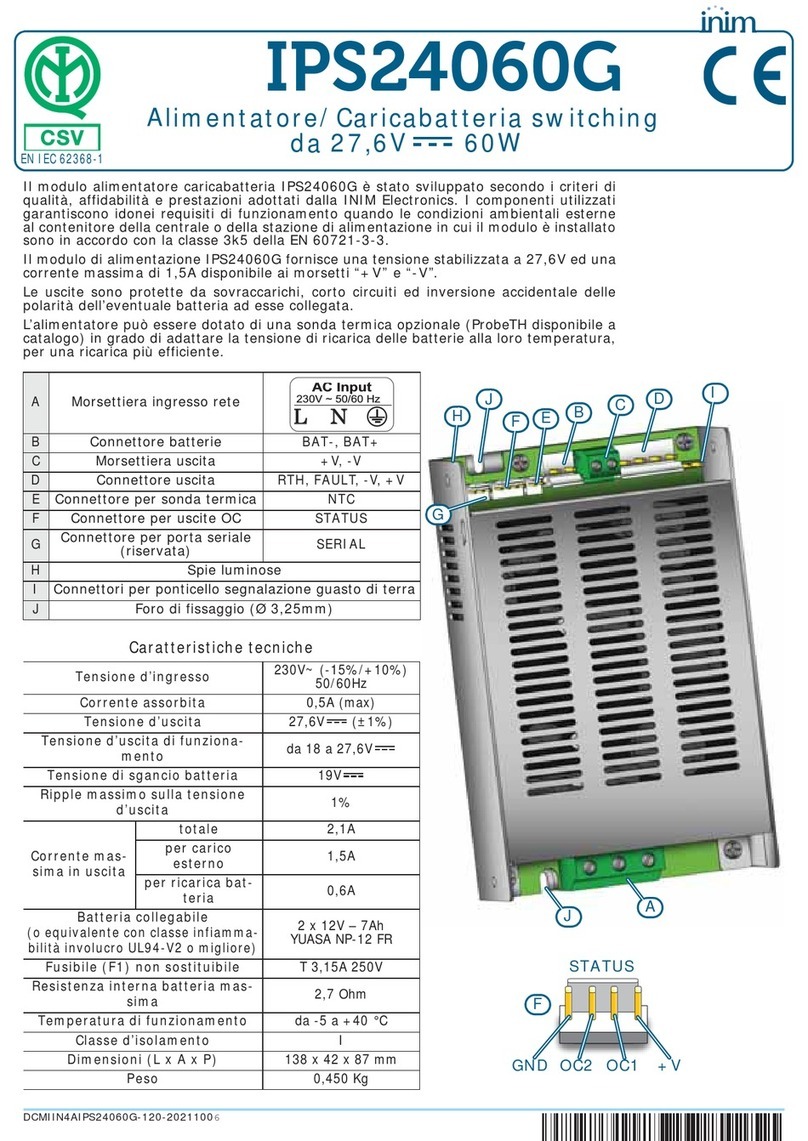
INIM Electronics
INIM Electronics IPS24060G Instruction Manual
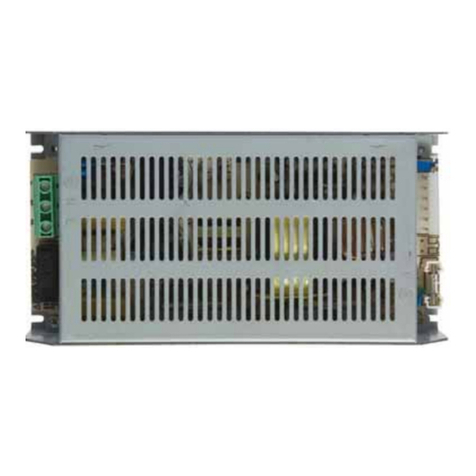
INIM Electronics
INIM Electronics IPS24140 User manual
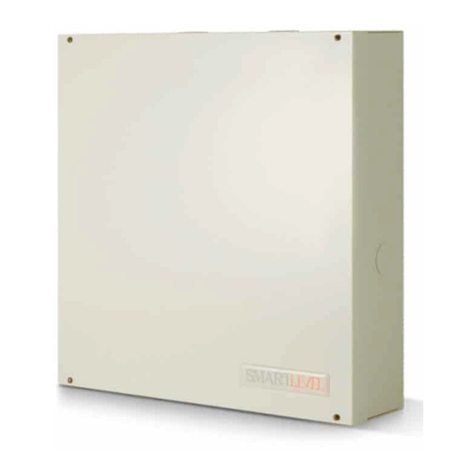
INIM Electronics
INIM Electronics SmartLevel Series Assembly instructions
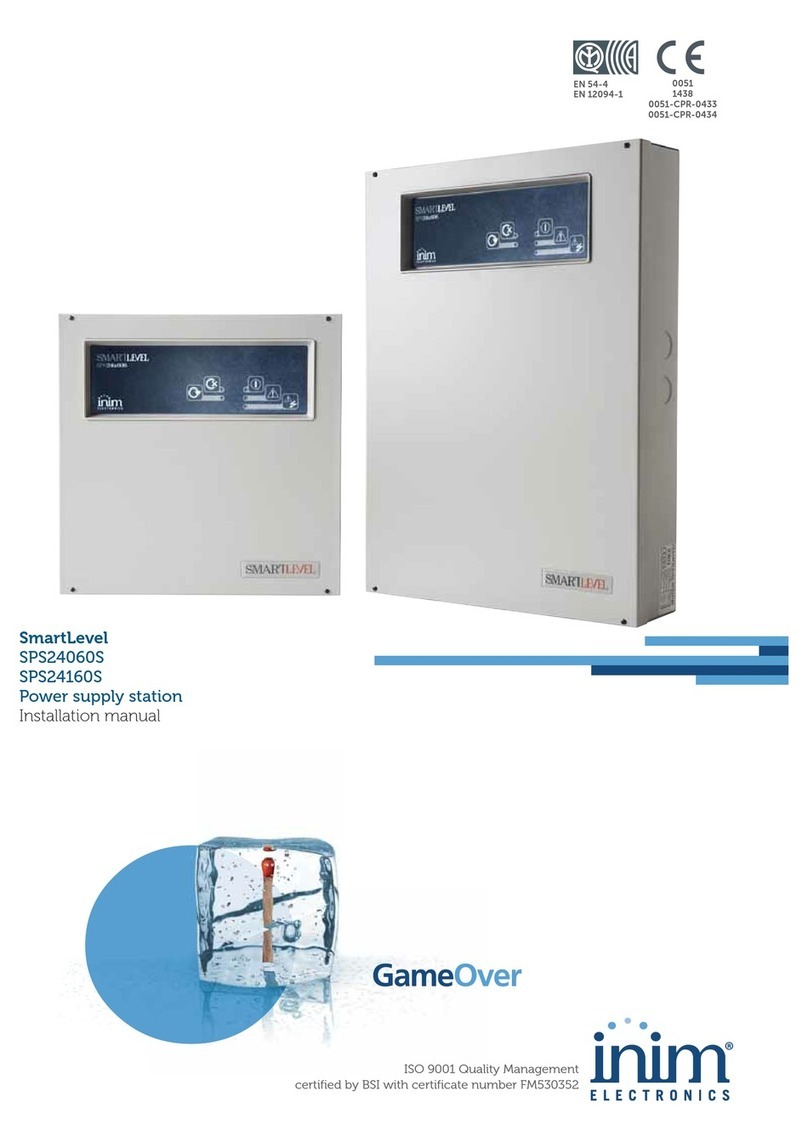
INIM Electronics
INIM Electronics SmartLevel SPS24060S User manual
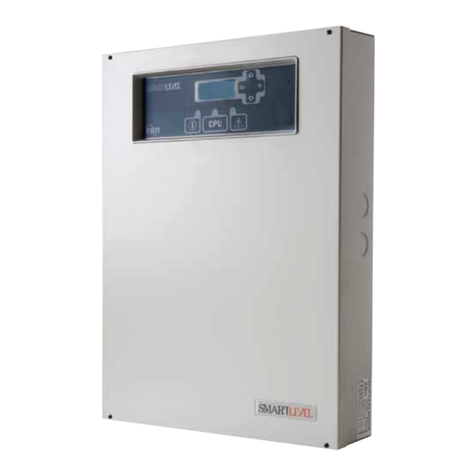
INIM Electronics
INIM Electronics SmartLevel SPS24040 Assembly instructions
Popular Power Supply manuals by other brands

MPE
MPE DP SERIES II Operating and service manual

Elektro-Automatik
Elektro-Automatik EL 9000 A instruction manual
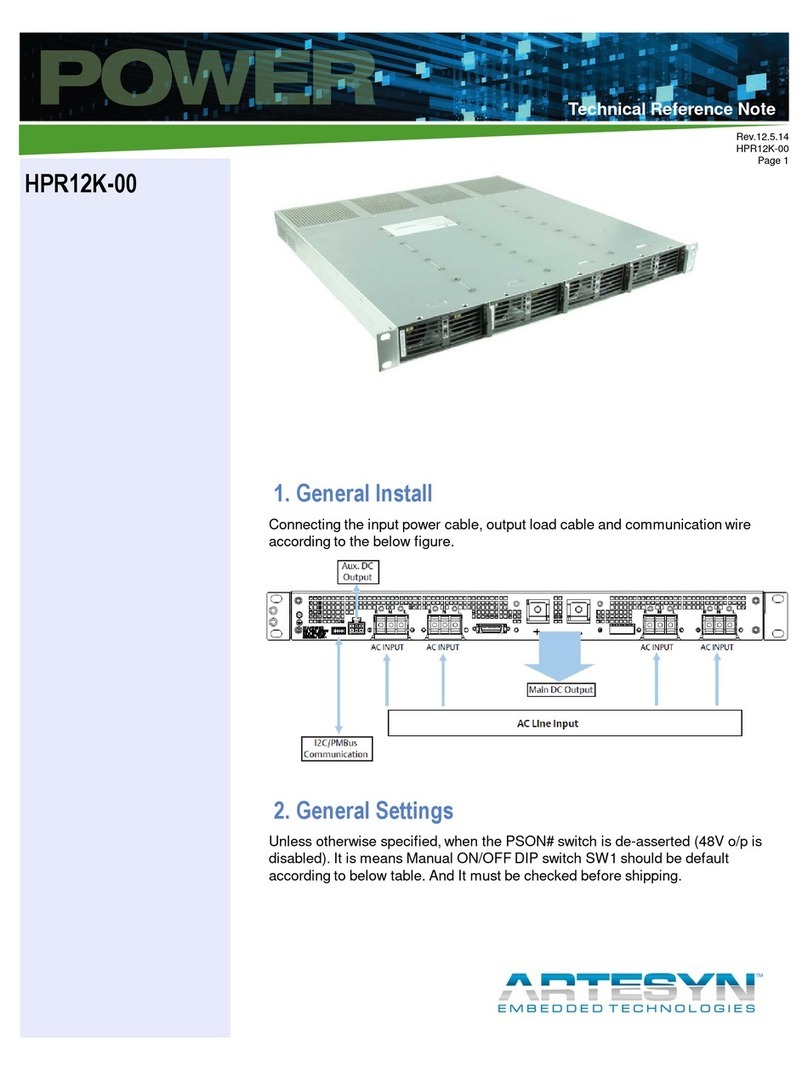
Artesyn
Artesyn HPR12K-00 Technical Reference Note
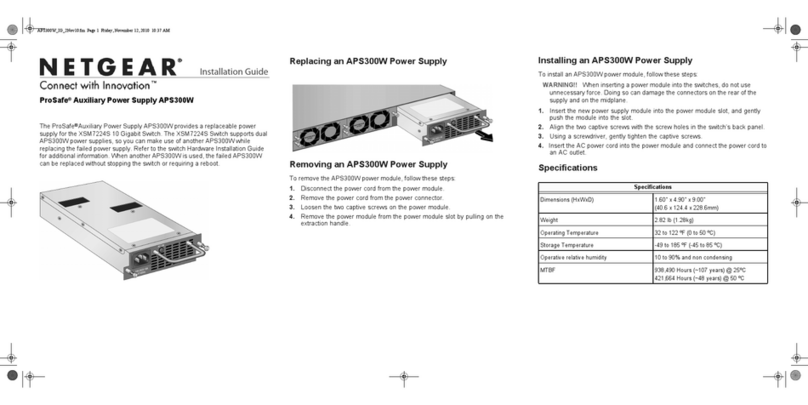
NETGEAR
NETGEAR XSM7224S - ProSafe 10 Gigabit Stackable installation guide
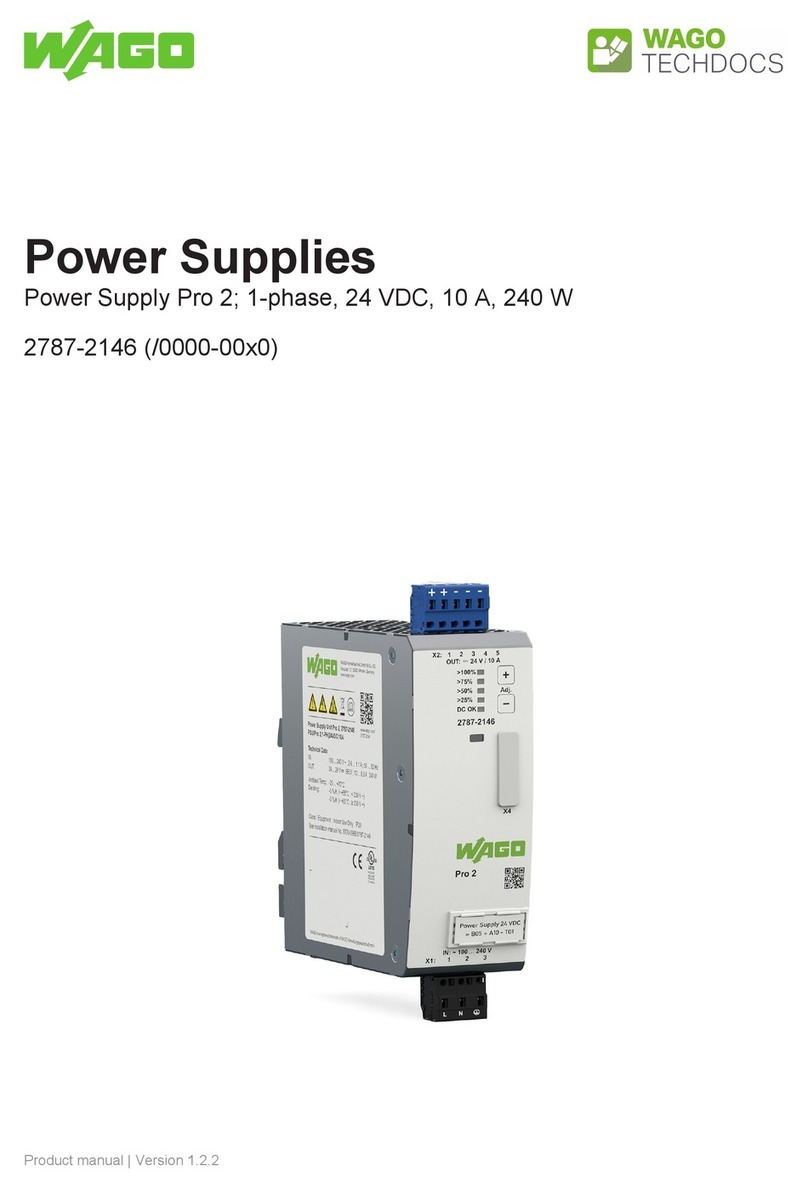
WAGO
WAGO Pro 2 product manual

urmet domus
urmet domus IPerVoice 1039 manual
